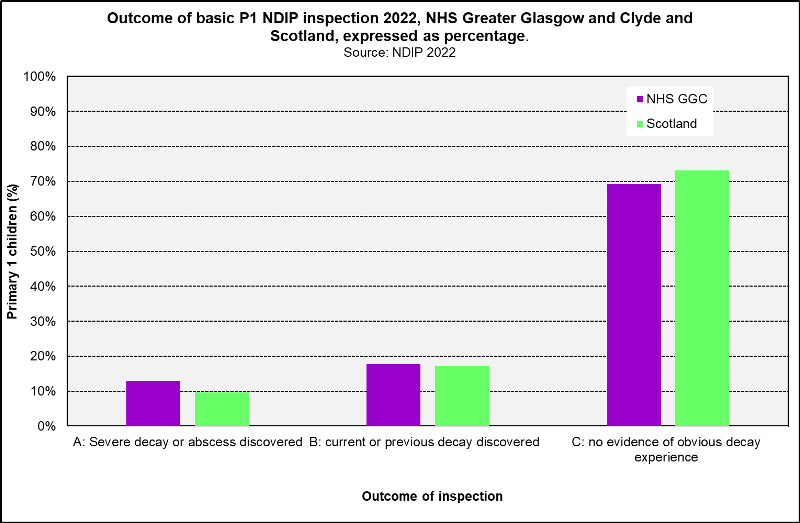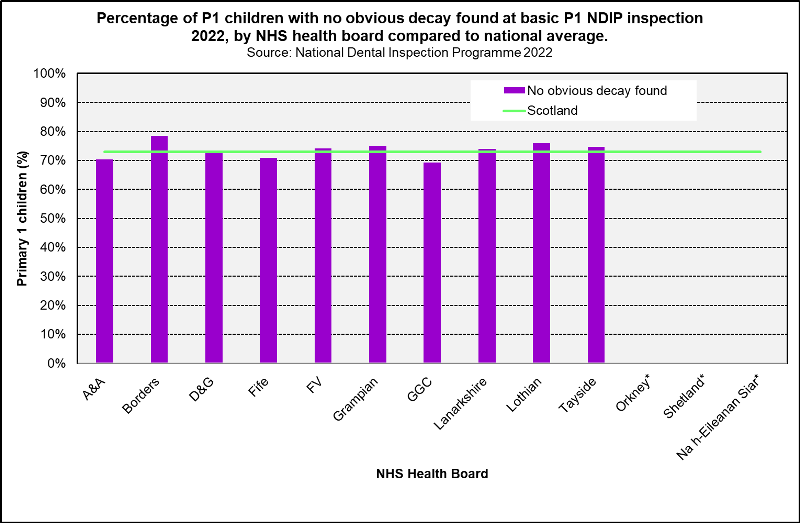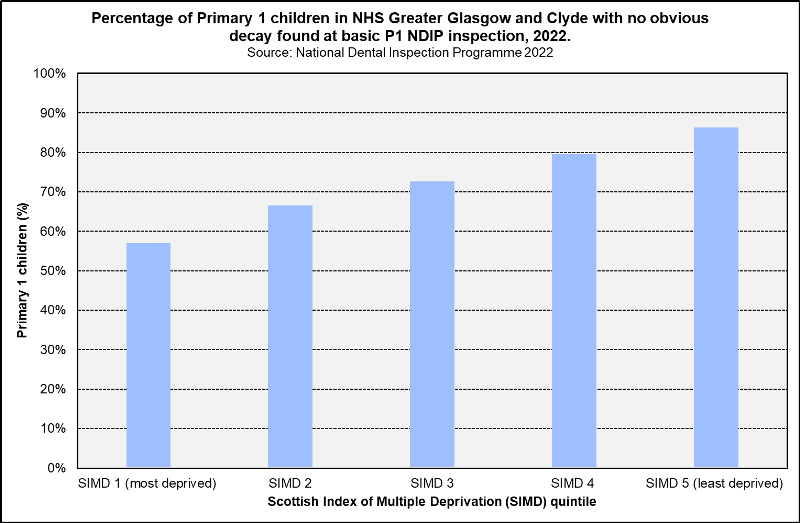Dental health
Data comes from the National Dental Inspection Programme (NDIP). This is carried out annually among primary school children to inform parents and caregivers of the child's oral health status and to provide reliable oral health information to Scottish Government and NHS boards at a local and national level. NDIP has two levels of inspection: a basic inspection, which all children in Primary 1 and 7 receive; and a detailed inspection which comprises a representative sample of P1 or P7 children in alternate years.
In 2022, the basic Primary 1 dental inspection in NHS Greater Glasgow and Clyde included 10,295 children: this represented 82% of the Primary 1 population of the health board at the time. Results showed 13% of children had severe decay or abscesses; 18% had current or previous decay; and over two thirds of children (69%) had no obvious decay experience. These figures reflect national rates.

Outcomes by health board
The proportion of Primary 1 children with no obvious decay varied between the health boards.
NHS Greater Glasgow and Clyde had the lowest proportion of children (69%) with no decay experience - this was also lower than the national average (73%) while NHS Borders had the highest proportion of children with no decay experience (78%).
Data for Highland, Orkney, Shetland, and Na h-Eileanan Siar was incomplete or unavailable.

Outcomes by deprivation
Dental health inequalities among primary children was evident across the health boards.
In NHS Greater Glasgow and Clyde, 86% of Primary 1 children in SIMD 5 (the least deprived quintile) had no obvious dental decay, compared to 57% of Primary children in SIMD 1 (the most deprived quintile).

NHS Grampian had the lowest proportion of Primary 1 children in SIMD 1 with no obvious decay and was one of two health boards (the other being NHS Borders) which had the largest inequality gap in dental health between SIMD 1 (51%) and SIMD 5 (83%).
Source
National Dental Inspection Programme (NDIP) 2019. Report of the 2019 detailed inspection programme of Primary 7 children and the basic inspection of Primary 1 and Primary 7 children. Information Services Division, 2019.
Notes
The detailed inspection involves a comprehensive assessment of the mouth of each child where the status of each surface of each tooth is assessed in accordance with international epidemiological conventions. A tooth surface is only assessed as having ‘obvious decay’ if the disease process clinically appears to have penetrated dentine (i.e. the layer below the outer white enamel of the teeth). Full details of the National Dental Inspection Programme (NDIP) and complete reports can be found here.
For more information and statistics on childhood deprivation in Glasgow, see the poverty section of this site. For information from research about the effects of child poverty on child health and of child poverty on adult health, see the resources page of the health section.
This page was updated in May 2024.
